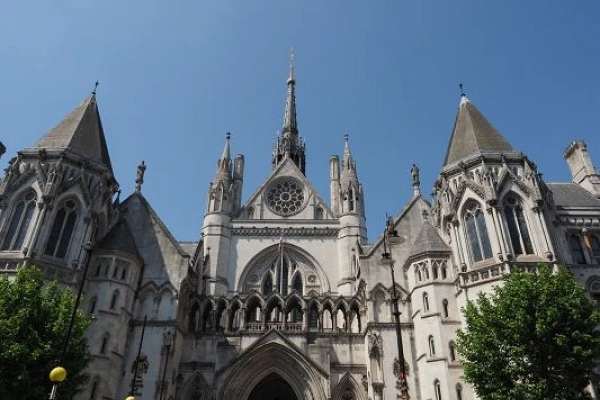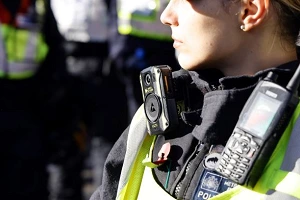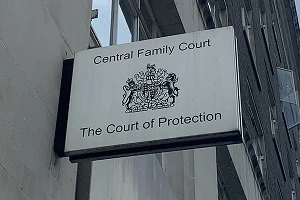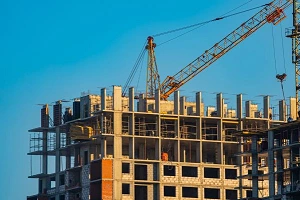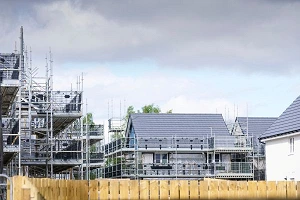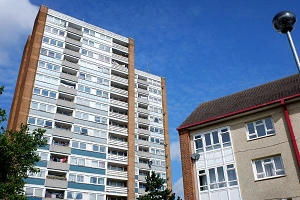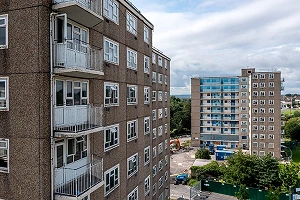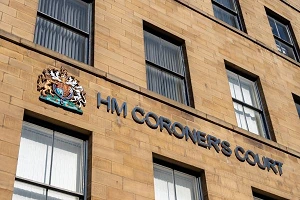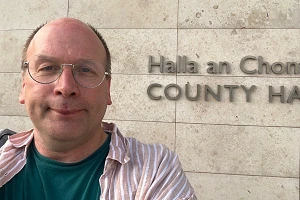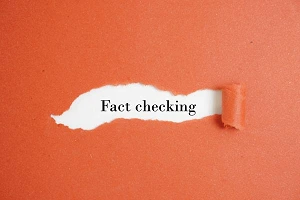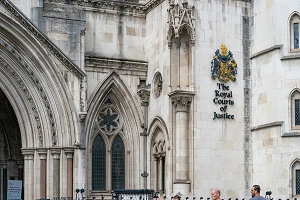Top-up fees: a growing risk for councils
Prohibitions orders, assessments and the HSSRS
Highways, kerbs and intervention levels
Local government reorganisation and historic liabilities
The status of co-opted members
Open Justice Principle – Where are the lines drawn in care proceedings?
What's the best way to manage conflict between colleagues in schools and colleges?
Scrutiny of professionals working in Children Act litigation
Teacher dismissed after joking about 'whacking' a pupil: was the decision fair?
Fear of harm and plans for adoption
Electronic and workplace balloting for statutory union ballots
Issues Resolution Hearings, threshold criteria and adequacy of reasons
Foster carers and manifestation of religious belief
Contempt, disclosure failures, and information governance
The ‘Hillsborough Law’, senior leaders and prevention of critical harm
Hoarding and learning from inquests – safeguarding to prevent tragic outcomes
Judging the use of AI
The Hammad appeal – Housing authority responses to homelessness in England and Wales
Natural justice and costs in the Court of Protection
The Procurement Act 2023: 10 months on, how is it going?
Costs, detailed assessment and misconduct
Airport expansion, EIAs and emissions
Boosting localised procurement - Reform to Section 17 LGA 1988
The Autumn Budget and Public-Private Partnerships
Calculation of Biodiversity Net Gain
The new National Licensing Policy Framework
The Social and Affordable Homes Programme: key points
Caravan site licensing and planning control
From 1925 to 2025
Licence revocation appeals and a change in circumstances
Self-neglect and capacity
Renewal of telecoms leases and building safety regulation
Procurement Act 2023: Anticipating and avoiding procurement disputes
Access injunctions: legal pathways to forced access and decants
Preparing for heat network regulation: timelines, obligations, and next steps
The lost enforcement of section 21
Housing case alert - November 2025
Section 21 - It’s not over yet
Expert evidence in housing conditions claims
Inquests and Housing
Wolverhampton Traveller injunctions – where are we now?
Is there a discretion to extinguish CIL?
Balancing public interest and planning control – accommodation of asylum seekers
Meaning of father in s2 Children Act 1989
A “43 moment” for the local government workforce
Section 193 LPA 1925: public access to commons and waste land
Growing apart?
Political and mayoral assistants
PFI expiry and employees
Welsh-medium inquests and the death register
The future of housing: What procurement and contracts teams need to know
No liability for sap falling on the public highway
Weapons in Cardiff educational settings: new guidance for schools
Public Sector High Court Litigation in 2025: Key trends so far
Enjoying the challenge
Abandoning procurements: risky business
The surge in Subsidy Control litigation
Dispersal of asylum seekers
Causation and being “homeless intentionally”
Strengthening the standards and conduct framework for local authorities in England
Facts still very much matter
Court of Appeal rules on exclusions once again
Faith-based oversubscription criteria
How to place children abroad after Re M
Fact finding in the Court of Protection
Discrimination arising from disability: did a school discriminate against a pupil when it excluded her?
Care cases involving multiple allegations
SEND and pupils absent due to health needs
Granting of parental responsibility
Confidentiality clauses and severance payments in FE colleges and Academy Trusts
The importance of an adequate mortgagee exclusion clause
Managing AI Risks in Local Government
Reconciling Conflicting Private and Public Interests on Large-Scale Infrastructure Projects
Subsidy Control – top tips for public authorities referring measures to the CMA's Subsidy Advice Unit
Awaab’s Law and Fitness for Human Habitation – the same, but different?
Daylight/sunlight material consideration for planning purposes
Article 4 Directions in Wales
Not all fun and games
Children law update - October 2025
Where now for the ‘right’ to park?
Zip-wires in caverns
Fix it fast: How “Awaab’s Law” is forcing action in social housing
Housing management in practice: six challenges shaping the sector
The Renting Homes (Wales) Act 2016 and rent paid during periods of unfitness
From the front line of HMO licensing
Housing case alert: September/October 2025
Environmental Statements: a cautionary tale
- Details
Planning authorities have an essential investigative role to play when it comes to environmental statements, writes Gerald Gouriet QC.
Local authorities must be prepared to look more critically at Environmental Statements (ES) than has previously been common practice. Recent case law confirms that planning authorities have an investigative role to play in this area.
In particular:
- Assertions in the ES made by or on behalf of a developer should not be accepted at face-value.
- Planning authorities should be alert to the possibility that the responses of statutory consultees may well be based on an assumption as to the accuracy of what the ES tells them.
- Unless the ES is examined critically, then something of a ‘blank cheque’ is being offered to developers and their experts to pitch their cases over-favourably to themselves.
Background
At a recent Planning Inquiry in South Norfolk (APP/L2630/A/08/2084443 – Land at Bussey’s Loke, Hempnall, Norfolk), the bullet points above were illustrated in what might be regarded as an object lesson in the need to approach with care assertions in the ES made by or on behalf of a developer; and, perhaps even more importantly, the need for local authorities to remind themselves that statutory consultees’ responses may well be predicated on the assumption that those assertions are accurate.
Amongst the points for the Inspector to consider was the likely effect of a proposed wind farm on the conservation of the local bat population. Environmental information emerged in three stages. Not only was the information presented at each stage flawed by its own internal errors, but stage 2 demonstrated that stage 1 was so inaccurate as to be near-valueless, and stage 3 demonstrated that even the stage 2 information (in addition to having its share of miscalculation, mis-transcription, and misstatement) presented a gross underestimate of the numbers and species of bats in the area.
To illustrate the point further: the ES initially recorded at stage 1 that in a nine-month period there had been only 361 passes of bats in the area, 11 of which were said to be repeated passes by “two or three at most” barbastelles (a rare bat on the ‘World Wide IUCN Red List’).
In response to a highly critical report commissioned by a local residents’ group, the developer produced further environmental information (stage 2), which revealed that some 15,000 passes of bats had been recorded (indicating the possibility of a breeding colony of barbastelles) in a mere two months of recording. Under sustained pressure from a single local resident, the developer was manoeuvred into producing stage 3 of the environmental information, which appeared during the Inquiry itself, in which no less than 24,000 passes of bats were recorded, again in a two month period, the breeding colony of barbastelles now being said to be potentially “of national significance”.
In refusing planning permission, the local authority had acknowledged the initial favourable response of Natural England to the ES and had accordingly ‘signed off’ on there being no environmental concerns. But the Natural England response from which the authority drew comfort had not sought to examine or query the accuracy of the ES. And the planning committee took no account of a report produced to them by one of the country’s leading bat experts – a report that was highly critical of the ES, concluding that the bat-surveys in the ecology chapter could not be relied on.
Natural England’s three responses to each of the three stages of information may be crudely summarised:
- Stage 1: we are pleased to see there are very few bats in the area, and that the impact on them will be minimal.
- Stage 2: on the basis of what we are now being told, we think that there may be a breeding colony of barbastelles. Mitigation would necessitate four of the turbines being turned off at night.
- Stage 3: the latest information indicates that the barbastelle colony may be of national significance. One of the turbines should not be constructed at all.
Neither Natural England nor the local authority carried out any independent checks of the ES. Nor did they examine critically the results or methodology of the two subsequent surveys. They simply adopted their conclusions.
Whilst it is perfectly understood that these bodies may not have the resources to validate everything presented to them in an ES, and accordingly one should not be too ready to criticise what happened in South Norfolk, it should equally be recognised that had it not been for the refusal by a local resident to accept the accuracy of the ES and of all the subsequent environmental information about bats, the self-serving picture painted by the developer would have stood uncorrected. (One of the two grounds upon which the appeal was eventually dismissed by the Inspector was that he was not convinced that the favourable conservation status of the bat population would be maintained at a local or regional level if the development were allowed).
R (on the application of Woolley) v Cheshire Borough Council [2009] EWHC 1227 Admin
In this judicial review a grant of planning permission was quashed because the local planning authority had failed to carry out their obligations under Regulation 3(4) of the Conservation (Natural Habitats, &c.) Regulations 1994, which provides that “… every competent authority in the exercise of any of their functions, shall have regard to the requirements of the Habitats Directive so far as they may be affected by the exercise of those functions.”
The High Court decided that ‘having regard’ to the Habitats Directive imposed an obligation on the planning authority that was not fulfilled merely by conditioning a grant so as to require a licence to be obtained from Natural England. The planning authority was obliged, itself, to consider whether the requirements of Article 16 of the Directive were capable of being met before planning permission could be granted.
In the context of this article, Natural England’s Guidance following the case of Woolley is of note. That says: “Natural England would encourage all planning authorities to appoint, or seek advice, from an appropriately qualified ecologist. Such an ecologist would be able to provide support to planning authorities in considering the impact of a proposed development on European and other protected species in a local, regional and national context.”
The subsequent case of R (on the application of Morge) v Hampshire County Council [2009] EWHC 2940 (Admin) again discussed the obligations on planning authorities under the Habitats Regulations, and found on the facts that the planning authority had met them. Importantly, the Council had commissioned its own detailed bat survey.
Practical points arising
1. Assertions in an ES made by or on behalf of a developer should not be accepted at face-value.
2. The responses of statutory consultees such as Natural England may well be based on an assumption as to the accuracy of what the ES tells them, and for that reason should be treated with some caution.
3. The approval of Natural England should not be regarded as a validation of the ecology information contained in the ES.
4. Where there are issues relating to the presence or otherwise of European Protected Species, and there is reason to suppose that the environmental information provided by the developer may be challenged on reasonable grounds by a third party, it is highly desirable that a planning authority seeks independent advice from an appropriately qualified ecologist.
5. The existence of conflicting experts’ reports as to the existence/conservation of protected species is a clear indication that such advice is required.
6. Where a statutory consultee such as Natural England has carried out an independent survey (rather than simply responding to the ES), then obviously the planning authority is not required to duplicate costs by commissioning yet another survey.
7. The above discussion is not confined to issues arising from the presence of bats; nor is it limited to responses to consultation from Natural England. The response of any statutory consultee is equally vulnerable, and the veracity of material submitted to it equally open to question, if Environmental Statements prepared on behalf of the developer are not subject to scrutiny.
Gerald Gouriet QC is a barrister at Francis Taylor Building.
This article was first published in the FTB Local Government Newsletter, which is available here. The newsletter contains short and practically focussed items sent quarterly by e-mail to busy local authority practitioners and is written by FTB’s specialist local government team. To subscribe to the FTB Newsletter, please e-mail
Planning authorities have an essential investigative role to play when it comes to environmental statements, writes Gerald Gouriet QC.
Local authorities must be prepared to look more critically at Environmental Statements (ES) than has previously been common practice. Recent case law confirms that planning authorities have an investigative role to play in this area.
In particular:
- Assertions in the ES made by or on behalf of a developer should not be accepted at face-value.
- Planning authorities should be alert to the possibility that the responses of statutory consultees may well be based on an assumption as to the accuracy of what the ES tells them.
- Unless the ES is examined critically, then something of a ‘blank cheque’ is being offered to developers and their experts to pitch their cases over-favourably to themselves.
Background
At a recent Planning Inquiry in South Norfolk (APP/L2630/A/08/2084443 – Land at Bussey’s Loke, Hempnall, Norfolk), the bullet points above were illustrated in what might be regarded as an object lesson in the need to approach with care assertions in the ES made by or on behalf of a developer; and, perhaps even more importantly, the need for local authorities to remind themselves that statutory consultees’ responses may well be predicated on the assumption that those assertions are accurate.
Amongst the points for the Inspector to consider was the likely effect of a proposed wind farm on the conservation of the local bat population. Environmental information emerged in three stages. Not only was the information presented at each stage flawed by its own internal errors, but stage 2 demonstrated that stage 1 was so inaccurate as to be near-valueless, and stage 3 demonstrated that even the stage 2 information (in addition to having its share of miscalculation, mis-transcription, and misstatement) presented a gross underestimate of the numbers and species of bats in the area.
To illustrate the point further: the ES initially recorded at stage 1 that in a nine-month period there had been only 361 passes of bats in the area, 11 of which were said to be repeated passes by “two or three at most” barbastelles (a rare bat on the ‘World Wide IUCN Red List’).
In response to a highly critical report commissioned by a local residents’ group, the developer produced further environmental information (stage 2), which revealed that some 15,000 passes of bats had been recorded (indicating the possibility of a breeding colony of barbastelles) in a mere two months of recording. Under sustained pressure from a single local resident, the developer was manoeuvred into producing stage 3 of the environmental information, which appeared during the Inquiry itself, in which no less than 24,000 passes of bats were recorded, again in a two month period, the breeding colony of barbastelles now being said to be potentially “of national significance”.
In refusing planning permission, the local authority had acknowledged the initial favourable response of Natural England to the ES and had accordingly ‘signed off’ on there being no environmental concerns. But the Natural England response from which the authority drew comfort had not sought to examine or query the accuracy of the ES. And the planning committee took no account of a report produced to them by one of the country’s leading bat experts – a report that was highly critical of the ES, concluding that the bat-surveys in the ecology chapter could not be relied on.
Natural England’s three responses to each of the three stages of information may be crudely summarised:
- Stage 1: we are pleased to see there are very few bats in the area, and that the impact on them will be minimal.
- Stage 2: on the basis of what we are now being told, we think that there may be a breeding colony of barbastelles. Mitigation would necessitate four of the turbines being turned off at night.
- Stage 3: the latest information indicates that the barbastelle colony may be of national significance. One of the turbines should not be constructed at all.
Neither Natural England nor the local authority carried out any independent checks of the ES. Nor did they examine critically the results or methodology of the two subsequent surveys. They simply adopted their conclusions.
Whilst it is perfectly understood that these bodies may not have the resources to validate everything presented to them in an ES, and accordingly one should not be too ready to criticise what happened in South Norfolk, it should equally be recognised that had it not been for the refusal by a local resident to accept the accuracy of the ES and of all the subsequent environmental information about bats, the self-serving picture painted by the developer would have stood uncorrected. (One of the two grounds upon which the appeal was eventually dismissed by the Inspector was that he was not convinced that the favourable conservation status of the bat population would be maintained at a local or regional level if the development were allowed).
R (on the application of Woolley) v Cheshire Borough Council [2009] EWHC 1227 Admin
In this judicial review a grant of planning permission was quashed because the local planning authority had failed to carry out their obligations under Regulation 3(4) of the Conservation (Natural Habitats, &c.) Regulations 1994, which provides that “… every competent authority in the exercise of any of their functions, shall have regard to the requirements of the Habitats Directive so far as they may be affected by the exercise of those functions.”
The High Court decided that ‘having regard’ to the Habitats Directive imposed an obligation on the planning authority that was not fulfilled merely by conditioning a grant so as to require a licence to be obtained from Natural England. The planning authority was obliged, itself, to consider whether the requirements of Article 16 of the Directive were capable of being met before planning permission could be granted.
In the context of this article, Natural England’s Guidance following the case of Woolley is of note. That says: “Natural England would encourage all planning authorities to appoint, or seek advice, from an appropriately qualified ecologist. Such an ecologist would be able to provide support to planning authorities in considering the impact of a proposed development on European and other protected species in a local, regional and national context.”
The subsequent case of R (on the application of Morge) v Hampshire County Council [2009] EWHC 2940 (Admin) again discussed the obligations on planning authorities under the Habitats Regulations, and found on the facts that the planning authority had met them. Importantly, the Council had commissioned its own detailed bat survey.
Practical points arising
1. Assertions in an ES made by or on behalf of a developer should not be accepted at face-value.
2. The responses of statutory consultees such as Natural England may well be based on an assumption as to the accuracy of what the ES tells them, and for that reason should be treated with some caution.
3. The approval of Natural England should not be regarded as a validation of the ecology information contained in the ES.
4. Where there are issues relating to the presence or otherwise of European Protected Species, and there is reason to suppose that the environmental information provided by the developer may be challenged on reasonable grounds by a third party, it is highly desirable that a planning authority seeks independent advice from an appropriately qualified ecologist.
5. The existence of conflicting experts’ reports as to the existence/conservation of protected species is a clear indication that such advice is required.
6. Where a statutory consultee such as Natural England has carried out an independent survey (rather than simply responding to the ES), then obviously the planning authority is not required to duplicate costs by commissioning yet another survey.
7. The above discussion is not confined to issues arising from the presence of bats; nor is it limited to responses to consultation from Natural England. The response of any statutory consultee is equally vulnerable, and the veracity of material submitted to it equally open to question, if Environmental Statements prepared on behalf of the developer are not subject to scrutiny.
Gerald Gouriet QC is a barrister at Francis Taylor Building.
This article was first published in the FTB Local Government Newsletter, which is available here. The newsletter contains short and practically focussed items sent quarterly by e-mail to busy local authority practitioners and is written by FTB’s specialist local government team. To subscribe to the FTB Newsletter, please e-mail
Sponsored articles
Walker Morris supports Tower Hamlets Council in first known Remediation Contribution Order application issued by local authority
Unlocking legal talent
Legal Director - Government and Public Sector
Contracts Lawyer
Principal Lawyer - Planning, Property & Contract
Senior Lawyer - Planning, Property & Contracts Team
Lawyer (Planning and Regulatory)
Locums
Poll












